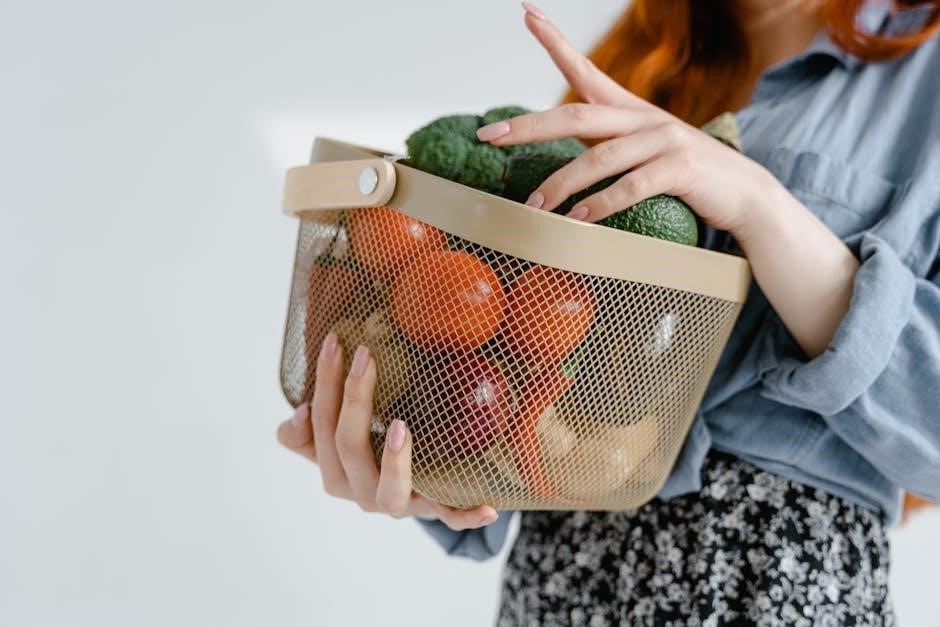Fresh Market Pizza is a favorite take-and-bake option‚ offering convenience and high-quality ingredients. Its crispy crust and customizable toppings make it perfect for home cooking enthusiasts.
1.1 What is Fresh Market Pizza?

Fresh Market Pizza is a high-quality‚ take-and-bake pizza designed for convenient home cooking. Made with premium ingredients and no artificial flavors or colors‚ it offers a delicious‚ restaurant-style meal without the hassle. Perfect for families or individuals‚ it combines fresh dough with customizable toppings‚ allowing you to create a personalized pizza experience at home. Its crispy crust and flavorful ingredients make it a popular choice for those seeking a quick yet satisfying meal.
1.2 Benefits of Cooking Fresh Market Pizza at Home
Cooking Fresh Market Pizza at home offers convenience‚ customization‚ and quality. It allows you to enjoy a restaurant-style meal without leaving your house. The pre-made dough and toppings save time‚ while the ability to add personal touches ensures a tailored flavor. High-quality ingredients and no artificial additives make it a healthier alternative to fast food. Plus‚ it’s an easy and fun meal option for families or gatherings‚ providing satisfaction and variety with minimal effort.

Essential Supplies and Tools Needed
An oven‚ baking sheets‚ or pizza stone are must-haves. Additional tools include kitchen utensils like a spatula‚ tongs‚ and oven mitts for safe handling.
2.1 Oven Requirements
A conventional oven is necessary for cooking Fresh Market Pizza. Preheat to 400-450°F (200-230°C). Ensure the oven rack is in the middle position for even cooking. Baking time typically ranges from 9-18 minutes‚ depending on temperature and pizza size. Proper preheating ensures a crispy crust and well-cooked toppings. Always refer to specific temperature guidelines provided with your pizza for optimal results. Safe oven handling and accurate temperature control are crucial for achieving the perfect bake.
2.2 Baking Sheets or Pizza Stone
For cooking Fresh Market Pizza‚ a baking sheet or pizza stone is essential. A pizza stone enhances crust crispiness‚ while a baking sheet provides even cooking and prevents sagging. Preheat the baking surface in the oven before placing the pizza to ensure a crispy base. Avoid overcrowding the sheet or stone to allow proper air circulation. Both options work well‚ but a pizza stone is recommended for an authentic‚ restaurant-style crust. Always preheat the surface according to the oven’s temperature requirements.
2.3 Kitchen Utensils for Preparation
Essential kitchen utensils for preparing Fresh Market Pizza include a small spatula or spoon for spreading toppings and sauces. Oven mitts are crucial for handling hot baking sheets or pizza stones. A pizza cutter or sharp knife is needed for slicing after baking. A baking sheet lined with parchment paper or foil simplifies cleanup and prevents sticking. These tools ensure a smooth and efficient cooking process‚ helping to achieve the perfect homemade pizza.
Understanding the Ingredients
Fresh Market Pizza features high-quality ingredients‚ including fresh dough‚ premium cheeses‚ and a variety of toppings. Understanding these components ensures optimal flavor and texture when cooking at home.
3.1 Typical Toppings Found on Fresh Market Pizza
Fresh Market Pizza often features toppings like pepperoni‚ cheese‚ and fresh vegetables such as green bell peppers and onions. These ingredients are selected for their quality and flavor‚ ensuring a delicious homemade baking experience. The combination of savory meats‚ melted cheeses‚ and crisp vegetables creates a balanced taste profile that appeals to a wide range of preferences.
3.2 Importance of Fresh Dough
Fresh dough is a cornerstone of Fresh Market Pizza‚ offering a superior texture and flavor. Made without synthetic colors or artificial flavors‚ it ensures a crispy crust and soft interior when baked. Fresh dough’s elasticity allows for easy shaping‚ while its natural ingredients enhance the pizza’s overall taste. Properly stored in the refrigerator‚ it maintains freshness for home baking‚ delivering a high-quality base for your toppings.
3.4 Role of Cheese and Sauces
Cheese and sauces are vital components of Fresh Market Pizza‚ enhancing flavor and texture. Cheese melts and browns during baking‚ binding toppings together‚ while sauces‚ like tomato or pesto‚ add moisture and depth. Proper distribution ensures even cooking‚ preventing sogginess. The combination of cheese and sauce creates a balanced taste‚ complementing the dough and toppings for a delicious‚ homemade pizza experience.
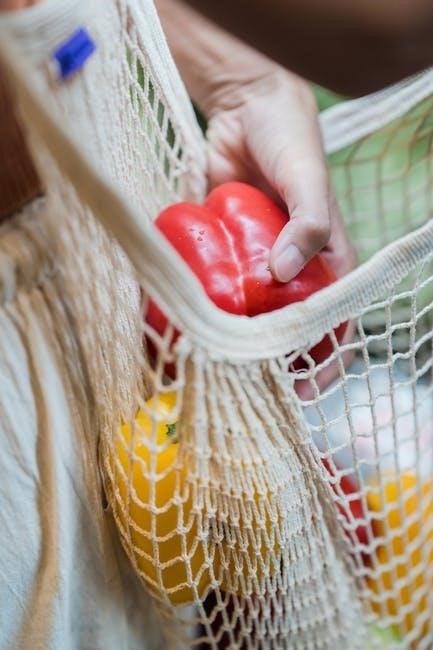
Preparing the Oven
Preheat the oven to 400°F-450°F‚ depending on the pizza type. Position the oven rack in the middle to ensure even cooking and proper crust browning.

4.1 Preheating the Oven to the Right Temperature
Preheat your oven to 400°F-450°F‚ depending on the pizza type. Fresh Market Pizzas typically require 400°F for 12-15 minutes or 450°F for 9-11 minutes. Higher temperatures suit thicker crusts‚ while lower temperatures are better for thinner crusts or delicate toppings. Ensure the oven is fully preheated before baking for even cooking. Refer to specific instructions on the packaging for precise temperature recommendations‚ as some varieties may vary slightly.
4.2 Positioning the Oven Rack
Place the oven rack in the middle position for even cooking. This ensures the pizza cooks uniformly and prevents the crust from burning. For convection ovens‚ adjust the rack slightly lower. Always follow the oven rack placement recommended in the pizza’s instructions. Proper positioning helps achieve a crispy crust and well-heated toppings. If unsure‚ consult your oven’s manual for optimal rack placement during pizza baking.
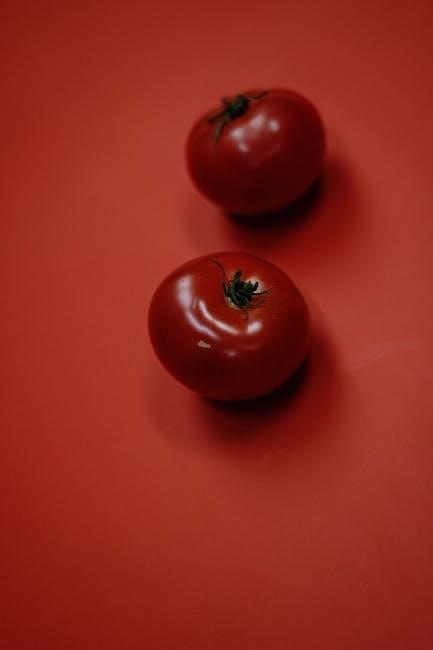
Preparing the Pizza
Start by removing all packaging‚ including plastic wrap or cardboard. Place the pizza directly on the oven rack or a baking sheet for even cooking.
5.1 Removing Packaging
Start by carefully removing all packaging materials‚ including plastic wrap and cardboard. Ensure no plastic remains on the pizza‚ as it can melt during baking. Gently place the pizza on a baking sheet or directly on the oven rack‚ depending on your preference. This step ensures even cooking and prevents any packaging-related issues while baking. Properly dispose of all packaging to maintain a clean and safe cooking environment.
5.2 Placing the Pizza on the Baking Surface
After removing the packaging‚ place the pizza directly on a preheated oven rack or a baking sheet lined with parchment paper. For even cooking‚ ensure the pizza is centered and flat. Avoid overlapping edges with the baking surface to prevent uneven browning. If using a pizza stone‚ lightly dust it with cornmeal before placing the pizza to prevent sticking. Proper placement ensures optimal airflow and even heating‚ leading to a perfectly cooked crust and toppings.

Baking Instructions
Preheat the oven to 400-425°F. Bake for 12-20 minutes‚ or until the crust is golden and cheese is bubbly and slightly browned.
6.1 Recommended Baking Temperature
The ideal baking temperature for Fresh Market Pizza is between 400°F and 425°F. For a crispy crust‚ preheat your oven to 425°F‚ while 400°F suits softer crust preferences. Ensure the oven is fully preheated before placing the pizza inside. Positioning the rack in the middle of the oven promotes even cooking. Always refer to specific product instructions‚ as some varieties may require slightly different temperatures for optimal results.
6.2 Suggested Baking Time
Fresh Market Pizza typically bakes for 9-11 minutes at 450°F or 14-20 minutes at 425°F. The exact time depends on your oven’s performance and desired crispiness. For a softer crust‚ aim for the lower end of the range‚ while a crisper crust may require a few extra minutes. Keep an eye on the pizza during the last few minutes to avoid overcooking. Adjust timing based on specific product instructions or personal preference for the perfect bake.
6.3 Checking for Doneness
To determine if your Fresh Market Pizza is ready‚ look for a golden-brown crust and melted‚ bubbly cheese. The sauce should be slightly caramelized‚ and the toppings should be cooked through. Avoid opening the oven too frequently‚ as this can release heat and extend baking time. For the best results‚ check the pizza during the final minutes of baking. Use a pizza peel or spatula to carefully lift the edge and inspect the crust’s crispiness without removing it from the oven.
6.4 Cooling the Pizza
Once baked‚ allow the pizza to cool for 2-3 minutes before slicing. This helps the cheese set and prevents toppings from sliding off. Remove the pizza from the oven and place it on a wire rack or cutting board. Letting it cool slightly ensures a cleaner cut and a crisper crust. Avoid cooling it directly on paper towels‚ as this can make the crust soggy. Cooling for a few minutes enhances the overall texture and flavor of the pizza.
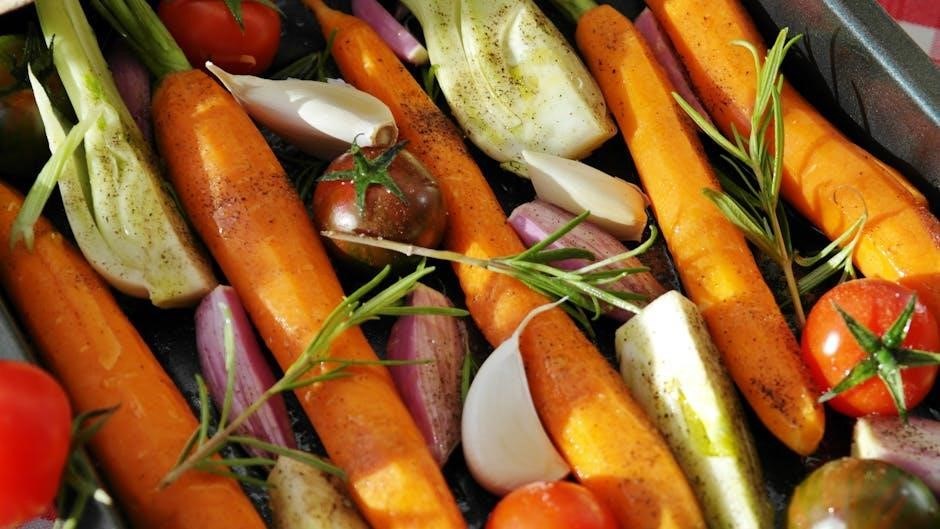
Additional Tips for Different Types of Fresh Market Pizza
Pepperoni pizza may require slightly higher temperatures for crispiness‚ while cheese pizza benefits from even heat distribution. Gourmet varieties often need reduced baking time to preserve fresh toppings.
7.1 Cooking Pepperoni Pizza
For the best results‚ preheat your oven to 425°F (220°C). Place the pepperoni pizza directly on the middle rack‚ ensuring even heat distribution. Bake for 12-15 minutes‚ or until the crust turns golden and the cheese is bubbly. Keep an eye on the pizza after 10 minutes to avoid overcooking. Once done‚ let it cool for a few minutes before slicing. This ensures the cheese sets and the flavors meld together perfectly‚ delivering a crispy‚ savory experience.
7.2 Cooking Cheese Pizza
Preheat your oven to 425°F (220°C). Place the cheese pizza on the middle rack for even cooking. Bake for 12-15 minutes until the crust is golden and the cheese is bubbly. Avoid overcooking‚ as the cheese may burn. Remove from the oven and let it cool for a few minutes before slicing. This ensures the cheese sets properly‚ resulting in a perfectly melted and flavorful cheese pizza. Keep an eye on it after 10 minutes to prevent overcooking.
7.3 Cooking Gourmet Varieties
For gourmet varieties‚ preheat your oven to 425°F (220°C). Place the pizza on the middle rack to ensure even cooking. Bake for 12-15 minutes‚ or until the crust is golden and the cheese is bubbly. Gourmet pizzas often feature delicate toppings‚ so avoid overcooking. Let it cool for a few minutes before slicing to preserve the flavors and textures. Higher-end ingredients may require careful monitoring to prevent sogginess or overcooking‚ ensuring a perfect balance of flavors and presentation.
Handling Frozen or Thawed Pizza Dough
Frozen dough should be thawed overnight in the refrigerator before use. Preheat the oven to 400°F (200°C) and bake for 5-7 minutes until lightly toasted.
8.1 Thawing Instructions for Frozen Dough
Frozen pizza dough should be thawed overnight in the refrigerator to ensure even thawing. Keep it refrigerated at 39°F (4°C) or below until ready to use.
Do not refreeze once thawed‚ as this can affect dough quality and texture. Proper thawing ensures the dough rolls out smoothly and bakes evenly‚ maintaining its fresh flavor and texture.
8.2 Rolling Out Fresh Dough
Rolling out fresh dough requires a lightly floured surface to prevent sticking. Gently knead the dough‚ then use a rolling pin to flatten it evenly‚ starting from the center.
Ensure the dough reaches your desired thickness without over-working it‚ as this can make it tough. Transfer the dough to a baking sheet or pizza stone‚ shaping it to fit. A consistent thickness ensures even baking and a crispy crust. Handle the dough gently to maintain its airy texture and flavor.
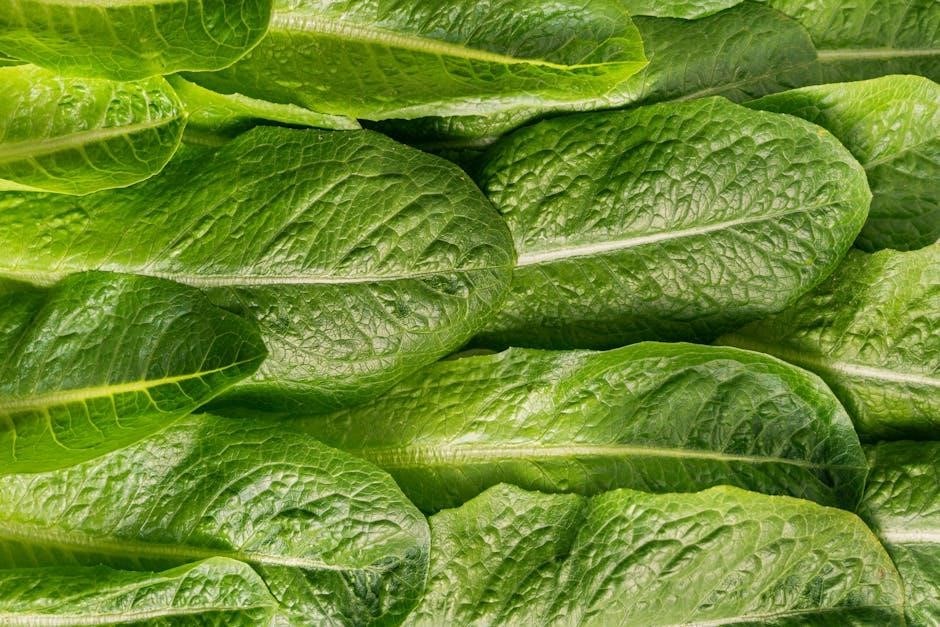
Adding Extra Toppings
Add fresh vegetables like bell peppers or onions‚ meats such as pepperoni‚ and extra cheese for flavor. Herbs and seasonings enhance the aroma and taste‚ making your pizza unique.
9.1 Fresh Vegetables
Fresh vegetables like green bell peppers‚ onions‚ and mushrooms add crunch and flavor. Chop them thinly and spread evenly to avoid overcrowding. Lightly sautéing or seasoning before adding ensures enhanced taste. Fresh tomatoes or spinach can also be used for a vibrant‚ nutritious twist. These additions not only elevate the pizza’s visual appeal but also provide a burst of freshness in every bite‚ making it a healthier and more satisfying meal option.
9.2 Meats and Cheese
Meats like pepperoni‚ sausage‚ bacon‚ or ham add savory flavors. Use pre-cooked options for convenience or fresh meats if preferred. Cheese‚ such as mozzarella or parmesan‚ melts beautifully. For extra richness‚ try gouda or provolone. Ensure meats are sliced thinly and cheeses are shredded or crumbled for even distribution. Avoid overloading to maintain a balanced taste and crisp crust. Proper portioning ensures the pizza cooks evenly and prevents sogginess‚ enhancing overall flavor and texture.
9.3 Herbs and Seasonings
Fresh herbs like basil‚ oregano‚ or cilantro add vibrant‚ aromatic flavors. Sprinkle them sparingly before baking for a bright‚ herby taste. Dried seasonings‚ such as Italian seasoning or garlic powder‚ provide depth without overpowering the pizza. Use them lightly to enhance the natural flavors of meats and cheeses. Fresh green onions or parsley can be added after baking for a fresh finish. Balance is key to avoid overwhelming the dish‚ allowing each ingredient to shine while maintaining the pizza’s crisp texture and rich flavor.
Common Mistakes to Avoid
Overloading the pizza with toppings can lead to a soggy crust. Incorrect oven temperatures may result in undercooked or burnt pizza. Not allowing the pizza to cool slightly before slicing ensures a messier‚ less enjoyable experience.
10.1 Overloading the Pizza
Overloading the pizza with too many toppings disrupts the balance of flavors and textures. Excess toppings can make the crust soggy and difficult to cook evenly. This mistake often leads to an undercooked center and overcooked edges‚ ruining the overall quality. To avoid this‚ keep toppings moderate and evenly distributed‚ ensuring the pizza cooks uniformly. Proper topping portioning ensures a crispy crust and perfectly melted cheese‚ delivering a satisfying homemade pizza experience every time.
10.2 Incorrect Oven Temperature
Using the wrong oven temperature can significantly affect the quality of your Fresh Market Pizza. If the oven is too hot‚ the crust may burn before the toppings are fully cooked. Conversely‚ a temperature that’s too low can result in a soggy crust and undercooked toppings. Always follow the recommended temperature‚ typically between 425°F and 450°F‚ to ensure even cooking. Proper preheating is essential for achieving the perfect balance of a crispy crust and well-cooked toppings‚ making your pizza enjoyable every time.
10.3 Not Allowing the Pizza to Cool

Not allowing the pizza to cool can lead to a soggy crust and cheese that doesn’t set properly. After baking‚ let the pizza rest for a few minutes to ensure the cheese solidifies and the crust retains its crispiness. This step is crucial for maintaining the texture and flavor of your Fresh Market Pizza‚ making it more enjoyable to eat. Proper cooling also prevents the toppings from becoming overly runny or messy.
Safety Tips
Handle hot oven racks with oven mitts. Keep children away from the oven. Ensure all utensils and surfaces are clean. Prioritize food safety during preparation.
11.1 Handling Hot Oven Racks
Always handle hot oven racks with oven mitts or tongs to avoid burns. Never touch hot racks with bare hands. Keep children away from the oven area. Use trivets or heat-resistant surfaces to place hot racks. Allow racks to cool slightly before cleaning. Ensure the oven is turned off before handling racks to prevent accidental burns. Proper handling ensures a safe cooking experience for everyone involved in preparing fresh market pizza.
11.2 Proper Food Handling Practices
Proper food handling is crucial for safe and enjoyable fresh market pizza cooking. Always thaw frozen dough in the refrigerator‚ not at room temperature. Keep ingredients refrigerated until use to prevent spoilage. Avoid cross-contamination by using clean utensils and surfaces. Wash hands thoroughly before handling food. Ensure all meats and cheeses are stored at appropriate temperatures. Follow package instructions for thawing and cooking to maintain food safety. Proper handling prevents foodborne illness and ensures a safe cooking experience.
12;2 Encouragement to Experiment
Cooking fresh market pizza at home is a rewarding experience. Don’t hesitate to experiment with new toppings‚ cheeses‚ and seasonings to create personalized flavors. Try different baking techniques or add fresh herbs for extra flair. Every pizza tells a story‚ so make yours unique and enjoy the process of crafting delicious meals for yourself and others.
12.1 Final Thoughts on Cooking Fresh Market Pizza
Cooking fresh market pizza at home is a simple yet rewarding experience. With proper oven preparation and attention to baking times‚ you can achieve a crispy crust and flavorful results. The convenience of pre-made dough and customizable toppings makes it ideal for quick meals. Always ensure safety by handling hot racks carefully and following proper food handling practices. Experiment with toppings and seasonings to create unique flavors‚ and enjoy the satisfaction of a delicious homemade pizza.
Fresh market pizza offers endless possibilities for creativity. Don’t hesitate to try new toppings or seasonings to elevate your pizza game. Add fresh vegetables‚ meats‚ or herbs to create unique flavor combinations. Remember to follow safety guidelines and baking tips for the best results. Experimenting allows you to tailor your pizza to your taste preferences‚ ensuring a perfectly personalized dish every time. Embrace the freedom to innovate and enjoy the process of crafting your ideal pizza!
